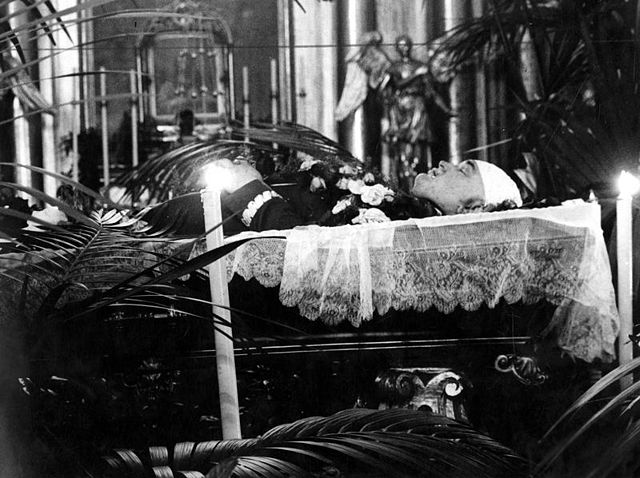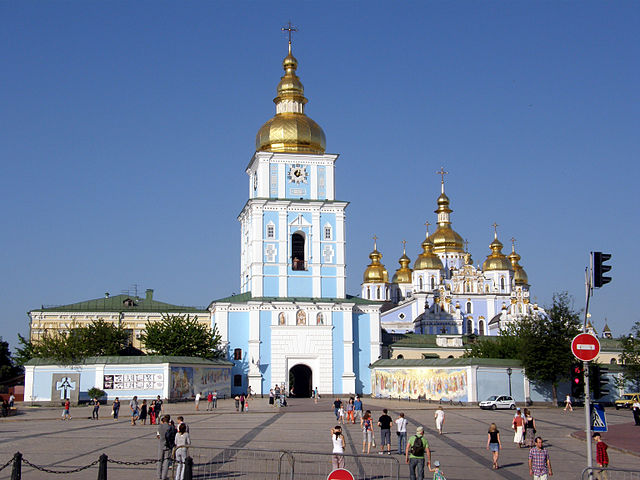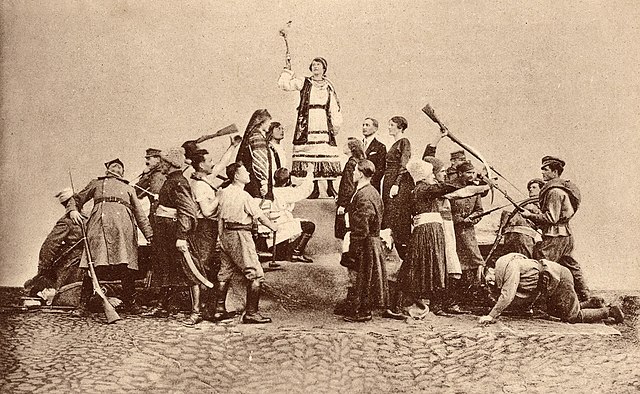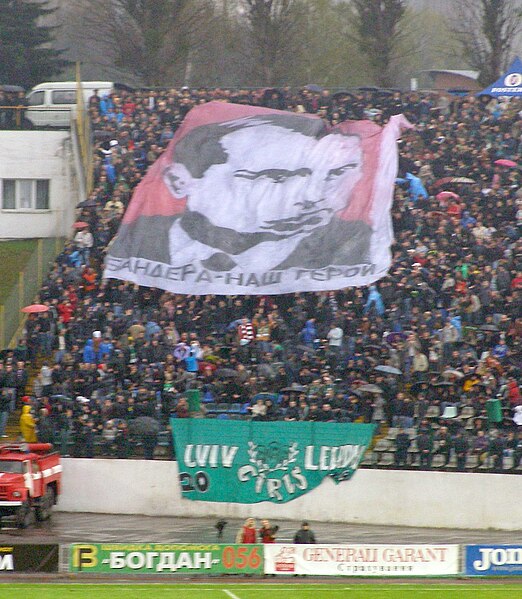Organisation of Ukrainian Nationalists
The Organisation of Ukrainian Nationalists was a Ukrainian nationalist organization established in 1929 in Vienna, uniting the Ukrainian Military Organization with smaller, mainly youth, radical nationalist right-wing groups. The OUN was the largest and one of the most important far-right Ukrainian organizations operating in the interwar period on the territory of the Second Polish Republic. The OUN was mostly active preceding, during, and immediately after the Second World War. Its ideology has been described as having been influenced by the writings of Dmytro Dontsov, from 1929 by Italian fascism, and from 1930 by German Nazism. The OUN pursued a strategy of violence, terrorism, and assassinations with the goal of creating an ethnically homogenous and totalitarian Ukrainian state.
Yevhen Konovalets, the OUN's leader from 1929 to 1938
Symon Petliura (center) and Colonel Yevhen Konovalets (to Petliura's right) taking the oath of office of the Sich Riflemen training school in Starokostiantyniv, 1919
The corpse of Bronisław Pieracki on 18 June 1934
Stepan Bandera
Ukrainian nationalism is the promotion of the unity of Ukrainians as a people and the promotion of the identity of Ukraine as a nation state. The origins of modern Ukrainian nationalism emerge during the 17th-century Cossack uprising against the Polish–Lithuanian Commonwealth led by Bohdan Khmelnytsky. Ukrainian nationalism draws upon a single national identity of culture, ethnicity, geographic location, language, politics, religion, traditions and belief in a shared singular history that dates back to the 9th century.
St. Michael's Golden-Domed Monastery in Kyiv, reconstructed after Ukrainian independence
Postcard published by the Ukrainian Brigade, "United Ukrainians defend against both Polish and Russian forces", 1920
Ukrainian nationalists demonstrate against the Soviet Union and for an independent Ukraine in 1941
Lviv football fans at a 2010 game against Donetsk. The banner reads "Bandera – our hero."








